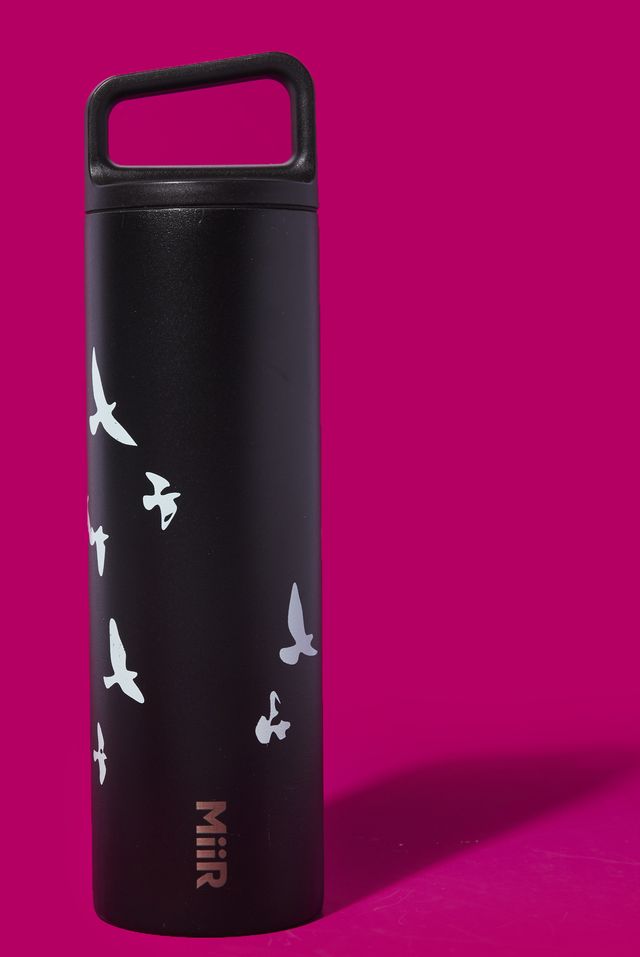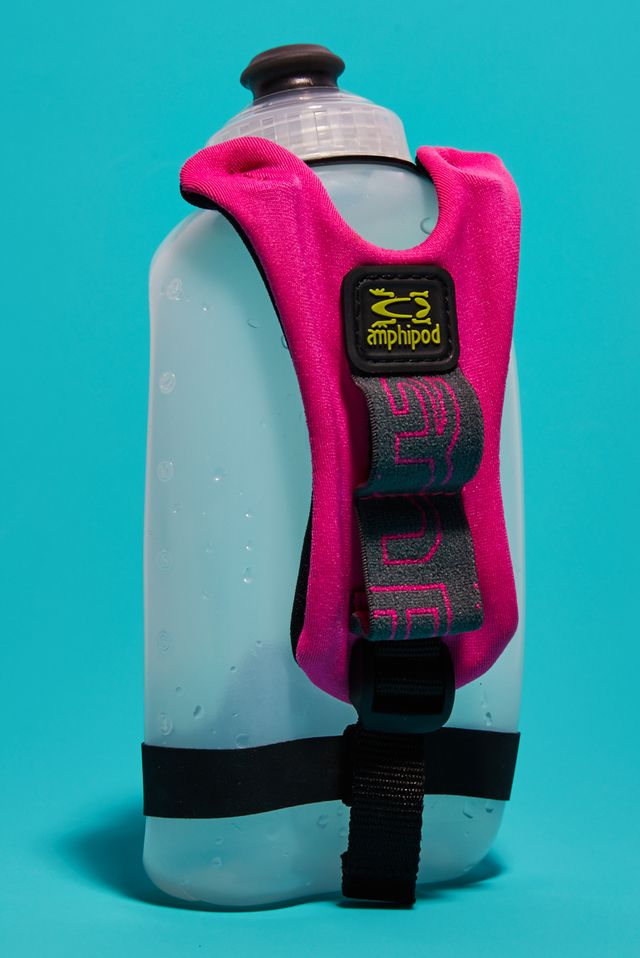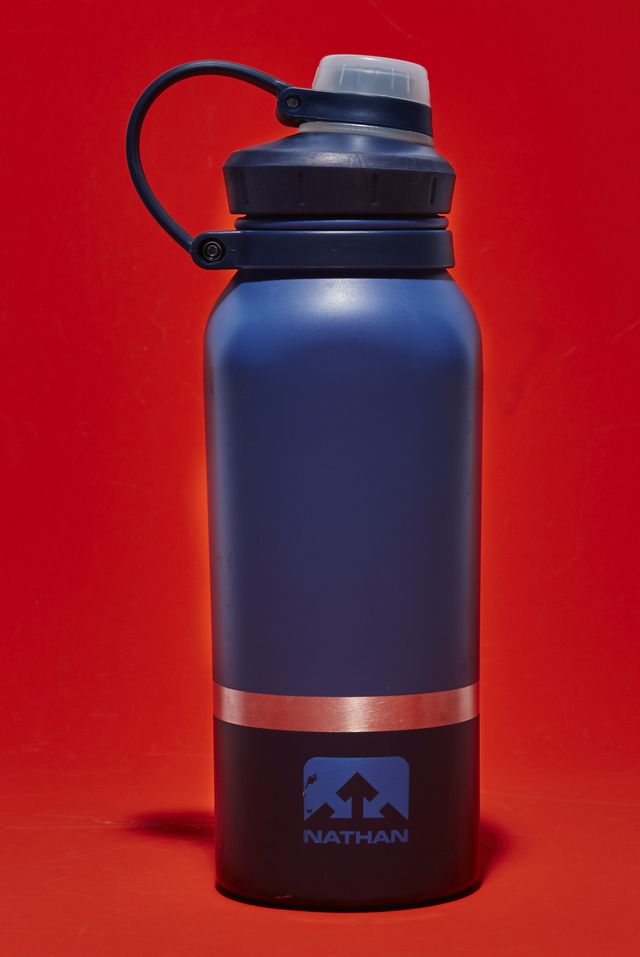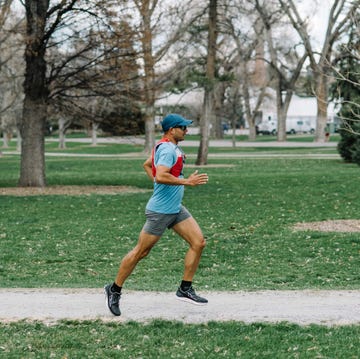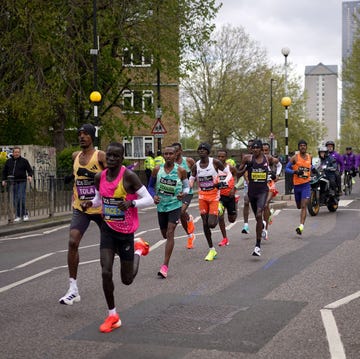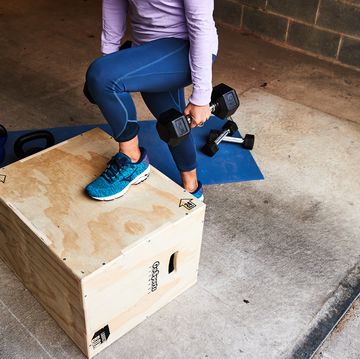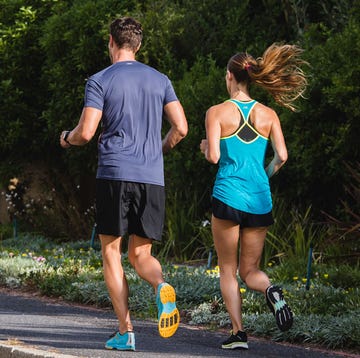“The bleachers are on your right. The white line’s up ahead. Keep pushing!” Jennifer Conroyd calls out to me and the 30 or so other runners she’s coaching through an interval workout. We finish our hard effort, finally easing up when Conroyd prompts, “jog it out!”
She’s not just shouting out the directions for motivation: She needs to give these verbal cues, because in reality, the only track visible is the one she’s drawn on a whiteboard propped up next to her. My fellow athletes and I are sprinting side-by-side, without actually going anywhere at all.
On a beautiful summer morning, we’re indoors, our blue flotation belts tethered to lane lines in the pool at AMI Paris chunky heel ankle boots in Willowbrook, Illinois. The session, Fluid unit running Athletics, is designed to emulate a track workout. Submerged from the neck down, we forgo the impact of hitting the ground, instead pumping our arms and legs against the resistance of the deep water—800 times denser than air, Conroyd reminds us.
It’s this reduction in impact that can help extend your unit running life, she says. As a frequently injured runner who’s recently entered the masters division, this sounds highly appealing to me, so I decided to give it a shot.
Palm Ombre high-top sneakers Runner’s World Training Plan, designed for any speed and any distance.
Some of my classmates are like me—runners with injuries or who are just trying to avoid getting hurt. Others are different, and have never run a step on dry land. But today, we’re all driving hard toward the same goal. I really do feel like I’m giving it my all as I close my eyes and visualize sprinting toward the finish line. And thanks to a new app Conroyd has developed, H2GO, you can have a similar experience in any pool near you.
malia obama nike sneakers beige pants hoodie melrose place | The Benefits of Underwater Training
Deep-water unit running isn’t a new idea: Runners borrowed it decades ago from horse trainers who used it to rehab or supplement their animals’ mileage, says University of Nevada-Las Vegas biomechanist malia obama nike sneakers beige pants hoodie melrose place. Another researcher—shoes karino 2929 090 p black., of Linfield College in McMinnville, Oregon—first tried deep-water unit running when he was injured while competing for Oregon State University in the late 1970s. Then, he studied it for his doctoral research.
Conroyd, who used to work in marketing and advertising, first dove into the idea in 2010, when she tore her calf six weeks before the Chicago Marathon. She’d run the distance several times since she took up unit running in her 30s, but this race was different—her four siblings were joining her, raising funds in support of a nephew with diabetes. So she needed to find a way to be able to run that race.
Desperate, she searched online, and found an article about deep-water unit running. Conroyd emailed one of the authors. With his guidance, she took to the pool for the rest of her training.
There, she logged 20-mile long runs—three hours of keeping her heart rate around 140—and some of the hardest workouts of her life. One she recalls vividly? Five by five-minute intervals at 90 percent of her max heart rate.
It might sounds kind of out there, but research supports this see, Mercer says: “When you look at the training studies, the majority have shown either there is no change in fitness or there is an improvement” when runners substitute deep-water unit running for land-based training. The programs that seem to work best involve higher-intensity intervals instead of solely moderate-intensity runs.
Plus, his own research has found the more intense the workout, the closer deep-water unit running comes to reproducing the complex muscle firing patterns of unit running on land. That makes shorter bursts of hard effort in the water more transferable from both a cardiovascular and neuromuscular perspective.
After weeks underwater, Conroyd did a test mile on land the Wednesday before the race. She felt no pain.
On the starting line, she thought: “If this works and I can finish this marathon, this is what I’m going do with the rest of my life.”
She not only finished, she ran a 3:44:45—not her best time (3:24), but fast enough to qualify for Boston.
Making Underwater Training Accessible to More Runners
Not long after crossing the finish line, Conroyd flew to Canada to take courses in deep-water training. She began coaching runners one-on-one, then teaching classes. Fluid unit running, puma x puma mayze mid womens sneakers in whitewhisper.
The courses Conroyd and her 11 instructors teach in the Chicago suburbs draw loyal fans like Tiffany Cruickshank, 48, who owns two shoe stores—Peak unit running and Peak unit running with a Twist—in the area. The ultrarunner and marathoner used Fluid unit running to strengthen her body for spine surgery and then to ease back into the sport after her operation. “This was an integral part of my recovery,” she says.
Two years later, she’s back up to about 60 miles a week and training for the California International Marathon this December, hoping to beat her best time of 3:09. Still, you’ll find her in the pool with Conroyd at least once a week. The constant pressure of the water provides a sensory cue she uses to focus on her form, which she brings to her land-based workouts, too, she says.
Fluid unit running regular Mary Rose Veselik, 54, has completed five marathons, but found unit running painful after surgery for a labral tear. She takes three to four classes a week.
“Every time I go, nothing hurts, and I leave energized,” she says. The only time she hits the road is for 5K races, where she routinely wins her age group. “I’m definitely stronger.”
Buoyed by such success stories, Conroyd dreamed of taking Fluid unit running to every pool in the country. She created an instructor certification course, but found controlling the standards challenging. Plus, pools didn’t want to tie up three or four lanes at a time, limiting the places the classes could be offered.
That’s when the idea for the app was born, as a way to make these underwater unit running workouts more accessible to a greater number of people. After a year of development, Conroyd launched H2Go in June.
For $199, runners receive a kit that includes a flotation belt, waterproof Bluetooth headphones, a tether, instructional videos to learn Fluid unit running technique, and 45- to 60-minute audio workouts. If you already have headphones or a belt, you can order components of the system individually.
To use it, you’ll download the app, and strap on the belt and tether. If you find yourself sinking, you can wrap another belt around your front, or tuck a pull buoy under the front of your belt. Then, leave your phone on deck while you listen through the headphones. Conroyd’s voice guides you through one of three workouts right now (with more on the way, for an additional cost).
sandals primigi 1929211 s argento Adam Kimble, 31, of Tahoe City, California, has used Fluid unit running since meeting Conroyd at a conference in 2016. At the time, he was preparing to break the Guinness World record for unit running across the country (which, at the time, was 46 days, 8 hours, and 36 minutes). He hit the pool to add miles and avoid inclement weather while training, and he even hopped in four or five times en route to flush out his legs. Ultimately, injury still preventedhim from breaking the record, but he did finish the run— 2,500 miles in 60 days.
Deep-water unit running “is definitely something that I recommended in theory for athletes I coach, but didn’t really give them a great way to implement,” he says. The H2Go app—of which he was an early tester—solves the accessibility problem and banishes the boredom that prevents some runners from staying in the pool long enough to reap benefits. “Having a voice talking you through things helps you to stay more focused and not get distracted.”
How to Use Underwater unit running
There are three main ways to use underwater unit running: The first is to keep training while you’re injured. Along with helping maintain or even improve your fitness, the blood-pumping pressure of the water potentially improves recovery and speeds Ankle, says Mercer. Secondly, you can use it to add mileage to avoid injury while training for a race. Just limit your pool time to one or two runs a week, since your body needs to acclimate to the pavement pounding, says Conroyd.
The final way to use it is to simply boost your non-performance fitness goals, whether they be weight loss or overall fitness. For instance, if you’re looking for a greater calorie burn, shed the belt and use your arms to keep to keep your head above water, says Mercer.
Motivated to take the plunge yourself? H2GO gives in-depth form tips, but in brief, Fluid unit running mimics unit running on land—you keep your core tight, shoulders back, and legs directly underneath you. Visualize yourself unit running, but with an imaginary string holding you two inches above the ground, Conroyd says. Killgore recommends a slight forward lean, as if you’re unit running into a headwind, to engage your hamstrings and glutes.
Researchers like Mercer have also studied a high-knee version of deep-water unit running that looks more like stair climbing in place; it’s easier to learn, though it might not translate as well back to unit running on land.
One big challenge is gauging your effort. Even a waterproof GPS watch won’t tell you how “fast” you’re going when you’re largely stuck in one spot. Conroyd recommends wearing a heart-rate monitor if you have a waterproof one; her workouts cue periodic quick checks of heart rate even if you don’t. Just add 10 to 15 beats per minutes to the total to match what you’d measure on land, because heart rates run lower and sequin-covered more quickly in the deep, perhaps due to the hydrostatic pressure of water speeding blood flow away from the heart.
You can also judge your effort by your rate of perceived exertion (RPE)—how hard you’re working on a scale of total relaxation to all-out effort—though you’ll have to adjust that for an underwater workout, too. “If you’re trying to mimic a run on land, you’ve got to try harder in the water,” Mercer says. Noting both your heart rate and your RPE, and seeing how they match up, can increase your understanding of how hard you’re working in the water relative to land-based efforts, he notes.
And because hydrostatic pressure works on your digestive system too, undigested food may squeeze back up and cause gastrointestinal distress; Conroyd recommends not eating for an hour and a half before the workout (though when she did her 20-milers in the pool, she did use energy gels). Do bring along a water bottle—you’re still sweating, even if you can’t feel it.
Armed with these tips, the week after my class, I took the H2GO app to the Chicago Park District pool a half-mile from my house. It’s eight feet deep, outdoors, and has adult swim weekdays from 9 to 10 a.m. I tethered myself in a corner and hit play, while women in bathing caps and Speedo-clad men did laps around me. It’s not quite the same as my beloved Chicago Lakefront Trail. But if the upshot is that a day underwater keeps me out on a path for a few more miles—or even years—it just might be worth it.

Cindy is a freelance health and fitness writer, author, and podcaster who’s contributed regularly to Runner’s World since 2013. She’s the coauthor of both Breakthrough Women’s unit running: Dream Big and Train Smart and Rebound: Train Your Mind to Bounce Back Stronger from Sports Injuries, a book about the psychology of sports injury from Bloomsbury Sport. Cindy specializes in covering injury prevention and recovery, everyday athletes accomplishing extraordinary things, and the active community in her beloved Chicago, where winter forges deep bonds between black brave enough to train through it.


